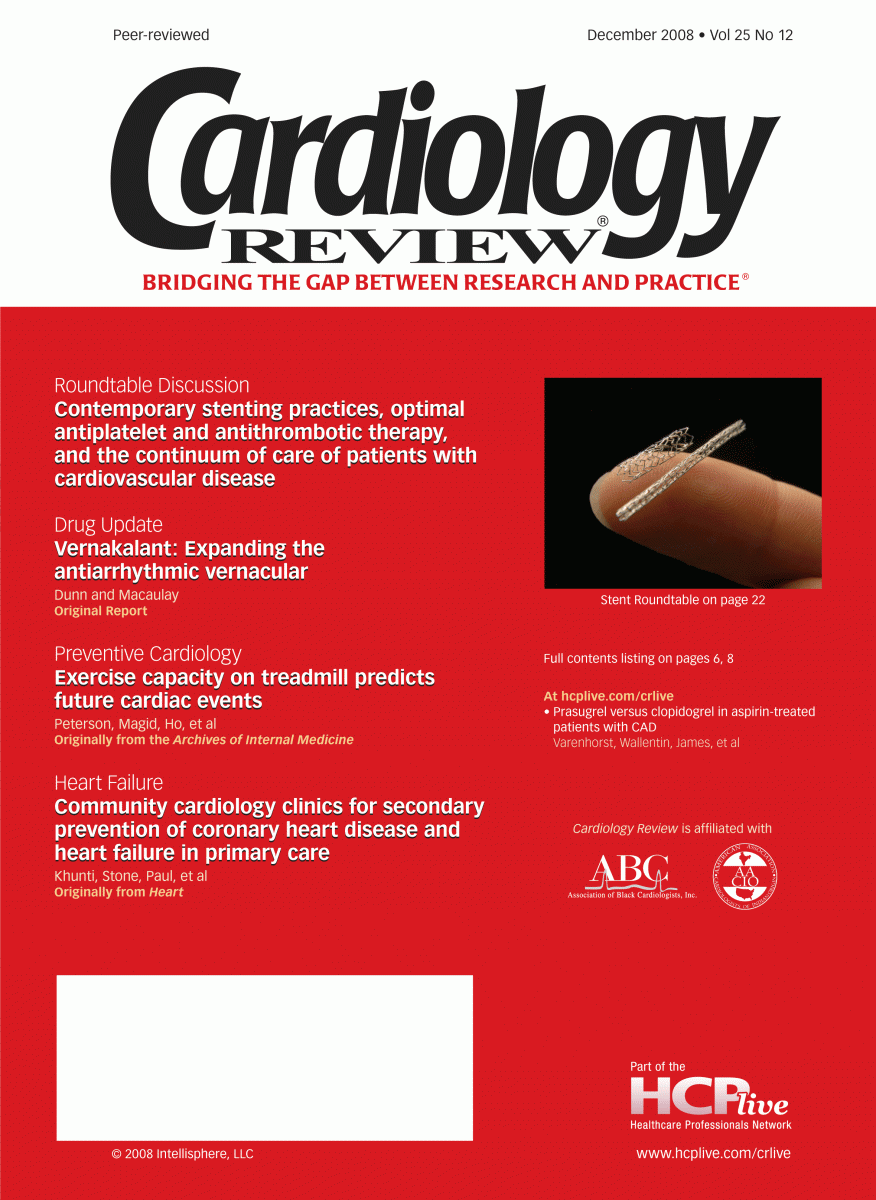Exercise capacity should not be overlooked as a predictor of cardiovascular risk
A 62-year-old man presented to our institution because of a history of chest pain that occurred once weekly, usually after eating, and improved with activity.
A 62-year-old man presented to our institution because of a history of chest pain that occurred once weekly, usually after eating, and improved with activity. Although his pain was considered atypical, he was referred for exercise treadmill testing because of concerns of the possibility of coronary artery disease. The patient had an extensive smoking history, but had quit 10 years earlier. His low-density lipoprotein was 142 mg/dL and his high-density lipoprotein was 38 mg/dL, but he was not on lipid-lowering medication. He had a history of hypertension, which was controlled with pharmacotherapy. He also had moderate chronic obstructive pulmonary disease (COPD), for which he used inhalers daily. The patient reported that he could walk his dog several blocks 3 days a week, and he thought he’d be able to exercise on a treadmill for the test.
The patient exercised for 4 minutes 36 seconds on a standard Bruce protocol, but exercise was terminated secondary to dyspnea. He did not experience chest pain with exercise. The patient achieved a maximum heart rate of 138 beats per minute, which represented 87% of his age-predicted maximal heart rate. At a workload of 6.5 metabolic equivalents, the patient achieved 82% of his age- and sex-predicted exercise capacity. The resting electrocardiogram (ECG) was normal and demonstrated upsloping ST-segment depression at peak exercise, which did not meet criteria for ischemia. His hemodynamic response to exercise was normal, and he had no ventricular ectopy with exercise or in recovery.
Because the patient experienced no chest pain while on the treadmill, and no horizontal ST-segment depression was evident on his ECG, the test was interpreted as “negative for ischemia” and his dyspnea and reduced exercise capacity were attributed to his COPD. The patient was told that the test was “normal,” to continue his current medications, and to follow up with his primary care doctor. Seven months after his exercise treadmill test, the patient presented to the emergency department with an acute myocardial infarction.
Exercise treadmill testing provides important prognostic information even when diagnostic ECG criteria for ischemia are not met. Poor exercise capacity predicts nonfatal cardiac events in addition to overall mortality, even when comorbidities are present that may explain the reduced exercise capacity. Clinicians should consider aggressive risk-factor modification and close follow-up of patients with reduced exercise capacity identified during exercise treadmill testing.
